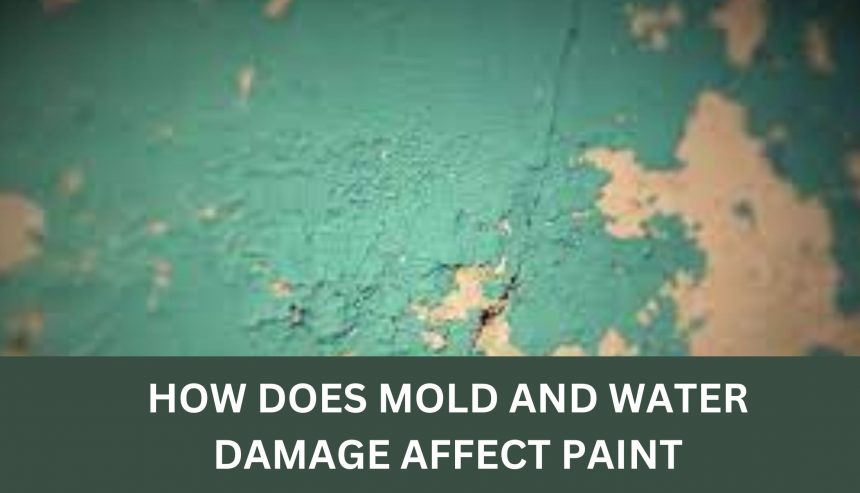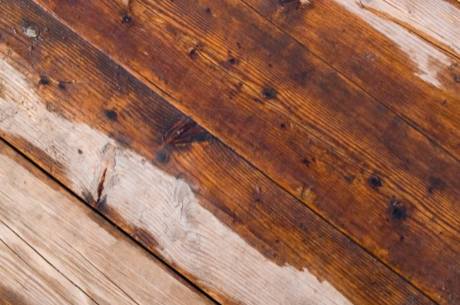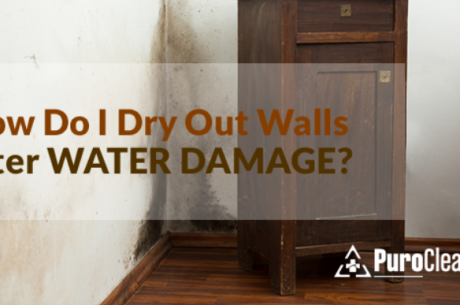Painting is often considered one of the simplest and most effective ways to refresh the look of a space. Whether you’re giving your home a makeover or sprucing up your office, a fresh coat of paint can work wonders. However, the durability and appearance of your paint job can be compromised when faced with the challenges of mold and water damage.
Mold and water damage are common issues in buildings, especially in areas with high humidity or prone to flooding. These problems not only affect the structural integrity of the building but also have a significant impact on the aesthetics of painted surfaces.
How Does Mold and Water Damage Affect Paint
In this blog post, we’ll delve into the ways in which mold and water damage can affect paint, exploring the underlying causes, the visible signs, and the necessary steps to address and prevent such issues. Let’s uncover how these seemingly innocuous problems can wreak havoc on your paint job and what you can do to mitigate their effects.
How Does Mold Affect Paint:
Mold growth on painted surfaces can significantly impact the appearance and integrity of the paint.
Here’s how:
Discoloration:
Mold often appears as dark spots or patches on painted walls or ceilings, causing unsightly discoloration. These stains can be difficult to remove, even with regular cleaning.
Odor:
Mold growth releases musty odors that can permeate the surrounding area. This unpleasant smell can linger even after the mold has been removed, affecting the overall ambiance of the space.
Deterioration:
Mold feeds on organic materials present in paint, such as binders and pigments. As it proliferates, it can degrade these components, causing the paint to lose its adhesion and durability. This deterioration may lead to cracking, peeling, or flaking of the paint film.
Health Risks:
Mold spores can trigger allergic reactions and respiratory problems in sensitive individuals. Exposure to mold-infested paint can exacerbate these health issues, making it essential to address mold growth promptly and effectively.
How Does Water Damage Affect Paint:
Water damage can wreak havoc on painted surfaces, causing a range of issues that compromise their appearance and durability.
Here’s how water damage affects paint:
Blistering:
When water seeps into the substrate beneath the paint, it can create pockets of moisture trapped beneath the paint film. Over time, these pockets expand, causing the paint to blister and bubble. This blistering not only detracts from the visual appeal of the surface but also weakens the paint’s adhesion.
Staining:
Water stains are a common consequence of water damage, particularly on ceilings and walls exposed to leaks or flooding. These stains appear as discolored patches on the painted surface, often accompanied by mold growth. Removing water stains can be challenging, requiring specialized techniques and products.
Peeling and Flaking:
Excessive moisture can cause the paint to lose its grip on the substrate, leading to peeling and flaking. Water damage weakens the bond between the paint and the underlying surface, resulting in unsightly patches of exposed substrate. Peeling paint not only detracts from the aesthetic appeal of the space but also leaves the underlying surface vulnerable to further damage.
Mold Growth:
Water-damaged surfaces provide ideal conditions for mold growth, as moisture and organic matter present in paint create a conducive environment for mold spores to thrive. Mold growth not only exacerbates the cosmetic issues associated with water damage but also poses health risks to occupants.
What to Do When You Discover Water Damage
Here’s what you should do when you discover water damage:
Assess the Situation:
Start by assessing the extent of the water damage. Determine the source of the water (e.g., burst pipe, leaking roof, flooding) and evaluate how far the water has spread. Understanding the scope of the damage will help you formulate an effective plan of action.
Ensure Safety:
Before attempting any cleanup or restoration efforts, prioritize safety. Turn off the power supply to affected areas if it’s safe to do so, especially if there is standing water near electrical outlets or appliances. Additionally, be cautious of slippery surfaces and potential structural damage.
Remove Excess Water:
If it’s safe and feasible, begin removing standing water using a wet/dry vacuum, buckets, or mops. The sooner you can extract the water, the better, as it reduces the risk of further damage and mold growth.
Dry Out the Area:
Thoroughly dry out the affected area using fans, dehumidifiers, and natural ventilation. Focus on removing moisture from carpets, walls, ceilings, and any other water-absorbent materials. Ensure proper airflow to facilitate the drying process and prevent mold growth.
Salvage and Remove Damaged Items:
Evaluate which items can be salvaged and which need to be discarded. Remove and dispose of water-damaged belongings, furniture, and building materials that cannot be effectively cleaned and restored.
Clean and Disinfect:
Once the area is thoroughly dried out, clean and disinfect all surfaces to prevent mold growth and bacterial contamination. Use appropriate cleaning solutions and disinfectants to sanitize affected areas thoroughly.
Address Mold Growth:
If mold has already begun to grow, take steps to address it promptly. Depending on the extent of the mold infestation, you may need to hire professional mold remediation services to safely and effectively remove the mold.
Repair and Restore:
After addressing the water damage and mold issues, focus on repairing and restoring the affected areas. This may involve patching up drywall, replacing flooring, repainting walls, or even undertaking structural repairs if necessary.
Prevent Future Water Damage:
Take proactive measures to prevent future water damage by addressing any underlying issues that contributed to the initial incident. This could include repairing leaks, improving drainage systems, and maintaining proper ventilation in moisture-prone areas.
Consult Professionals:
If the water damage is extensive or if you’re unsure about how to proceed, don’t hesitate to seek professional help. Water damage restoration experts can provide guidance, assess the damage, and carry out comprehensive restoration efforts to ensure your property is thoroughly restored.
For Mold and Water damage restoration in Staten Island, New York
A professional restoration company, such as PuroClean, understands and uses the principles and procedures of how to restore properties. For efficient mold remediation and water damage repair, call the PuroClean of Bulls Head on +1 347-501-6155. Our trained and certified technicians will restore your properties quickly and thoroughly, preventing further damage and mold growth.
In conclusion, addressing water damage and its impact on painted surfaces is crucial for maintaining the integrity and aesthetics of your home or property. Whether dealing with mold growth, paint blistering, or structural concerns, swift and effective action is key to mitigating the long-term effects of water damage.
By following the steps outlined in this guide, including prompt assessment, thorough cleanup, and preventive measures, you can minimize the risk of further damage and ensure a safe and healthy living environment. Remember to prioritize safety, consult professionals when needed, and stay proactive in preventing future water damage incidents.
FAQs
Should you pop paint bubbles?
It’s generally not recommended to pop paint bubbles. These bubbles typically form due to moisture trapped beneath the paint surface, and popping them can worsen the problem by exposing the underlying substrate to further moisture. Instead, focus on addressing the underlying cause of the bubbles, such as water intrusion or high humidity, and take steps to properly dry and repaint the affected area.
Can water damage affect the structural integrity of my walls?
Yes, water damage can indeed affect the structural integrity of walls, especially if left untreated. Prolonged exposure to water can weaken the materials comprising the walls, such as drywall or wood framing, leading to deterioration, warping, and even structural instability. It’s essential to address water damage promptly to prevent further structural issues and ensure the safety and stability of your property.
How can I prevent water damage to walls and ceilings in high-humidity rooms, like bathrooms?
To prevent water damage in high-humidity areas such as bathrooms, consider implementing the following preventive measures:
- Ensure proper ventilation by installing exhaust fans or opening windows during and after showers to reduce humidity levels.
- Seal grout lines and caulking around fixtures to prevent water penetration.
- Use moisture-resistant paint and materials for walls and ceilings in bathrooms.
- Promptly repair any leaks in plumbing fixtures, faucets, or pipes to prevent water intrusion.
- Regularly inspect and maintain bathroom fixtures and seals to identify and address potential water damage issues early.
Does homeowners insurance cover water and mold damage to painted walls?
Whether homeowners insurance covers water and mold damage to painted walls depends on the specific policy and the circumstances surrounding the damage. In many cases, standard homeowners insurance policies provide coverage for sudden and accidental water damage caused by events like burst pipes or plumbing leaks.
However, coverage for mold damage may be limited or excluded, particularly if it’s deemed the result of neglect or lack of maintenance. It’s essential to review your insurance policy carefully and consult with your insurance provider to understand the extent of coverage for water and mold damage to painted walls. Consider supplementing your coverage with additional endorsements or riders if necessary.



